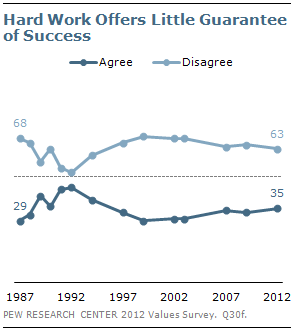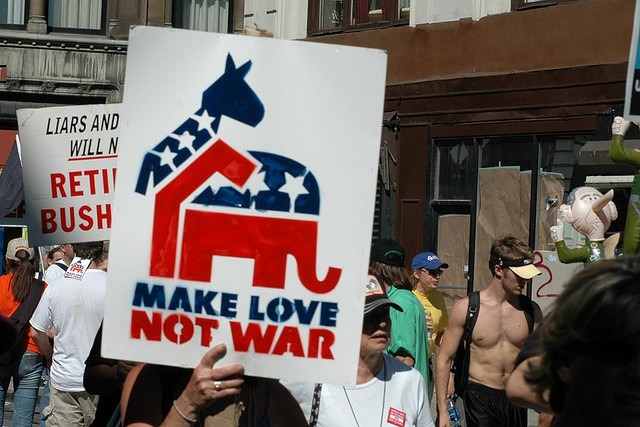
Photo by John Morton
Remember that election in 2000, when we were all wringing our hands and talking about red and blue and — most of us anyway — rending our garments in despair as we stood on hilltops yowling at the cruel fates which had created this divided America? Remember those days?
We were way more politically united back then. Way more.
The Pew Research Center for the People and the Press conducts an annual survey gauging Americans’ values and basic beliefs, the newest version of which was released yesterday. The questions asked remain consistent — I have old-fashioned values about family and marriage; We should help more needy people, even if it means going deeper in debt — allowing Pew to judge how the responses change over time. Here’s what the average difference between Democrat and Republican respondents looks like since 1987:

In short, respondents from the two parties are about 18 percent different on average. If a Democrat is 50 percent likely to believe something, the Republican is at 32 percent. It’s the broadest gap Pew has ever seen, about double what it was in 1997.
We’re talking about 18 percentage points, including broadly inoffensive statements like I am very patriotic. Diving into particular issues, it looks even worse. Let’s take, say, the environment.

In 1992, the first year the question was asked, 86 percent of Republicans believed that “there [need] to be stricter laws and regulations to protect the environment.” Today, that figure is at 47 percent, meaning that the two parties are 46 percentage points apart. It’s a 39 percent drop in 30 years — entirely unrelated to the fossil fuel industry’s heavy lobbying and partisan attacks on completely sensible clean energy and sustainability initiatives. It’s just a mystery of politics.
The environment is actually the second-widest spread between the two parties. Students of the American system can probably guess the first: the role of the social safety net, or, if you prefer, OMG SOCIALIZM.

Here’s an interesting data point. Between the summer of 1990 and the spring of 1991, the American economy was in recession. That time period correlates with the narrowest part of this graph:

Meaning that during that recession, Americans were least likely to believe that simply by working hard they could achieve success. During the most recent recession? No such narrowing. Again, this is in no way due to a concerted effort by America’s privileged class to bolster support for its policies and advantages by insisting that the meritocracy is alive and well and a valid reason for avoiding taxing the wealthy! This, too, is a political mystery that will remain unsolved, probably forever.
The study has an enormous amount of data, from which a lot of conclusions can be drawn. Go! Explore! But here are the two most important things you will learn:
- For however bad we thought it was, 2000 America wasn’t the most divided we’ve ever been. It was the continental shelf we stood on right before we dove into the blackest depths of the ocean. (I think I can maybe see the Titanic!)
- It’s the poor people’s fault.



